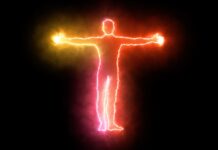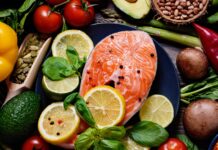Why do we fall in love? More importantly, why was a feeling of love in the evolutionary process developed, preserved and supported? In this context, are we just in love? Do other animals fall in love? Is love different from love and what is it? In this article, we will try to provide answers to these questions in a clear and simple.
When you look into eyes, smell it, touch skin, it won’t fit in you. Your heart beats faster, your face is pink, you feel a lump on your chest, your tummy is twisted, you feel “butterflies fly” inside. If the effect is strong enough, your knees weaken and you cannot carry your weight.
You sweat, your pupils grow. From your armpits and your genitals, you start to scatter a small amount of odor hormones (pheromones) that will mix with your sweat odor. The amount of them increases to the expense as long as you remain around the person you are affected with. In the meantime, your appetite closes and your stomach and your stomach starts to work more slowly, your mouth dries. Because the body functions towards survival, functions directed towards reproduction (sex). If you are a man, your penis hardens, if you are female, your vagina gets wet and swells. The activity of your brain increases, the body is made ready to achieve its purpose.
This is: You are in love.
Yes, we are not as successful as the writers and philosophers to define love. Unfortunately, we cannot make a dark pink definition and we cannot tell the love of your dreams that we have been taught to date. But we are clearly assertive about one thing: we can tell you the love in a more realistic and concrete way than any one ever made, we can reveal the scientific facts about the subject and we can tell you the idd realities of love is, beyond the e true love Ancak. In this article, we aim to do so.
So, apart from all this reality, in addition to stories that are almost exaggerated and almost exaggerated, never really reflect the truth, what is love?

What is love? How we fall in love?
Anyone who wants to understand the scientific background of love must first accept that: Love, like all other bodily events, is a purely biochemical process and has no meaning as iler abstract iler and absolutely no matter what matter! Love is definitely not a heart-related feeling, and like all other emotions, love also occurs only in the brain.
Every feeling, without exception, is produced in the brain, including love, is perceived in the brain and ends in the brain. So what we call “love” starts in the brain and ends in the brain.
After all these clarifications, the definition of love has been described very simply in the world-famous Merriam-Webster dictionary:
“Love is a strong sense of commitment and sense of personal attachment.” Although we examine this feeling in two levels of love and love, there is no such distinction in English and the word “love” is used for all kinds of love. Therefore, love may be mistaken in some cases only to be considered as inter-sex love. However, since we are in Turkish in this article, we would like to state that ”love hayatta here means e an individual’s intense love towards the sex he / she is interested in ğu, ie du love,, which we use in daily life. As you can see from this definition, love is not a feeling that must be between males and females.
Evulation of Love
In the evolution process, one of the most important characteristics that holds the population together in the social species, which has a social structure in particular, is the bonds formed between individuals. Between parents and offspring, between individuals born in the same period (brothers and peers in general), ties formed between males and females strengthen the social structure and provide an evolutionary advantage. In addition, this sense of bond brings along a sense of empathy, so that instead of selfish and individualized individuals, species that can act as a whole can evolve. Therefore, the sense of love in terms of continuity and strength of the species may have been important. In random mating individuals, the transformation of the love between the parents and their offspring into a different form may have led to the evolution of the intergenerational love. In particular, the love between the parent and her offspring is based on a mutual secret relation of interest.
Even though “mother love” is “supreme” in our cultural structure, it is evolved as a product of a highly expedient relationship from an evolutionary and scientific point of view: By looking at its offspring, the mother contributes to the transfer of her own genes to future generations. If she is, she may be advantageous by her mother looking for other puppies. In this way, both the mother and the mother have gained evolution. Of course this is not done consciously or intentionally; however, there are countless data that show that the organism’s genetic equipment is loaded with such egoism. However, other social features that we have developed through our cultural evolution can often suppress such selfishness. For example, we can have a love that seems to be completely free of charge to the offspring of the child, and even to the offspring of other species.
Therefore, we can say that the basis of the evolution of love is based on the fact that the link between sexual motives and the members of society contributes to the continuity of the species.
As can be seen, it is very difficult to examine the evolution of love from a single perspective. Numerous factors, from the way of our birth, to the evolution of our two feet, to our brain structure and greatness, may have played a role in the evolution of love. However, whatever it is, the harmony of love from an evolutionary point of view has ensured that this feature is fixed in our species.

Do Animals Fall in Love?
Before completing this evolutionary perspective, we think it would be useful to take a brief look at other animal species. Ultimately, evolution showed us the fact that all species that existed and existed and existed are related to each other. In this case, it is very natural to expect to see the same or similar features of our cousin species.
Obviously in other species, love is not as strong as love. This is a situation in which we are very familiar with evolutionary biology. Because love as a feeling is a phenomenon in the brain, and no life has evolved with a brain as advanced as our brain. In this case, it would be a mistake to expect an element originating from the brain to be of another type in this complexity. However, we see that there are many other animal species of love, especially in mammals with a highly developed group of animals.
The fact that animals do not act only with instincts and possess consciousness, perception and thought like us is now widely known and accepted. Therefore, it will be completely flawless to see these creatures as robots and programmed machines. Other animals can also make decisions and make choices. However, there is not much room for perceptual intelligence in emotions that are almost completely instinctive like love, and conscious choices are considered unimportant.
For now, it would probably not be wrong to say that many of the other animals, though not as complicated as us, have a clear understanding of love.

Magic Neuroscience Basics of Love
The neuroscientific foundations of love provide very clear data about what we feel and why. First of all, let us remember that all emotions like love are a feeling felt in the sum of the reactions that occur in our body as a result of a completely hormonal process. So if we want to understand love, we need to understand the neurochemical foundations behind it.
From a scientific point of view, nerve growth factor, testosterone, estrogen, dopamine, norepinephrine (noradrenaline), serotonin, oxytocin and finally vasopressin are the main hormones and chemicals that cause love. As it can be seen, love causes us to feel muddled because it is based on a highly complex hormonal balance.
Now, based on our explanations about evolutionary biology, let’s take a look at what changes in our bodies create when we meet an individual (biological or cultural) that we consider appropriate.
Testosterone: An effective sex hormone, especially in the immediate vicinity of the first love. It causes you to feel lust and desire for the sex you are interested in, and to desire this gender. Females are present in small amounts and have these tasks; however, it allows the preparation of the penis and the testes to a possible sexual intercourse in the first stages of love. Causes the penis to erect.
Estrogen: It is an effective sex hormone especially in and near the first love. It causes you to feel lust and desire for the sex you are interested in, and to desire this gender. There are few in men and these tasks are; however, it also allows the female to prepare the vagina and the fetus for a possible sexual mating. It can cause the vagina to get wet against the person of interest.
Nerve Growth Factor: This chemical, which is relatively new among the hormones of love, is rapidly increasing especially when we are first in love, gradually decreasing after 1 year and returning to its former state. Scientists, therefore, think that their real life is about 1-2 years. This is essentially logical; for human beings to remain attached to a single individual is an obstacle to evolutionary diversity. The cultural structure of man, however, has led him to a monolithic social life; for this reason, even if there is no sense of love like the first, couples can stay together for decades because of their social responsibilities as well as their loyalty and love / respect relations. However, it is necessary to repeat that both human beings and their close relatives are genetically polygamous species, even if they are socially monogamous.
Dopamine: A neurotransmitter, dopamine, induces feelings of happiness and peace in the body when it is secreted. It adds additional energy and attention to the individual. In this way, the focus is placed on the individual who is in love and the additional energy and attention needed to reach him can be provided. This supports the evolutionist arguments. And the reason we like falling in love is these beautiful emotions. It has the same effect as the effect of various drugs and sedatives.
Noradrenaline: A hormone that is secreted against stress when we are in love. Stress can be caused by any environmental pressure on the individual, and love is just one of these pressures. However, due to the release of noradrenaline, heart rate increases, lips and mouth dries, blood increases to muscles, stomach and intestinal muscles relax. This can also be seen as a preparation stage for a possible mating. But more importantly, love has always been the main reason for the misinterpretation of the heart. Because of Noradrenaline, when we fall in love, we feel that our heart is accelerating and the muscles in our stomach relax, “we are in love with the heart” and “butterflies fly in our belly”. This is scientifically nonsense. The only organ that falls in love is the brain.
Serotonin: Serotonin, the main hormone of happiness, is among the basic hormones of love. However, what makes serotonin special in terms of love is that there is an explanation of the problem of the activity of this hormone in obsessive-compulsive behavior disorder, in other words, “obsessed” people: It is the fluctuation in serotonin levels when we fall in love, the reason we can not think of anyone other than a single person. In short, when we fall in love, we become obsessive-obsessive-compulsive behavior disorder. This is also a hormonal arrangement that provides an evolutionary advantage to achieve the desired goal.
We wish all of you to live your life with love by keeping it in a corner of your mind.

Here’s How To Make Someone Fall In Love With You
When researchers asked people to tell the stories of how they fell in love, what were the eleven most common factors?
Variables That Influence Falling in Love
1. Similarity in attitudes, background, personality traits
2. Geographic proximity
3. Desirable characteristics of personality and appearance
4. Reciprocal affection, the fact that the other likes us
5. Satisfying needs
6. Physical and emotional arousal
7. Social influences, norms, and the approval of people in our circle
8. Specific cues in the beloved’s voice, eyes, posture, way of moving
9. Readiness for a romantic relationship
10. Opportunities to be alone together
11. Mystery, in the situation or the person












